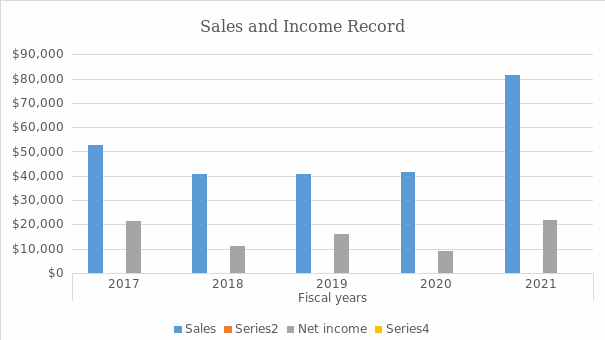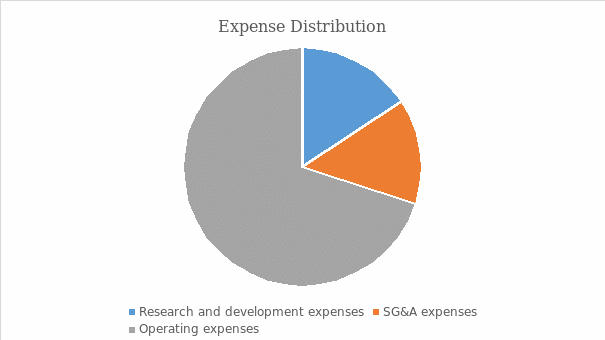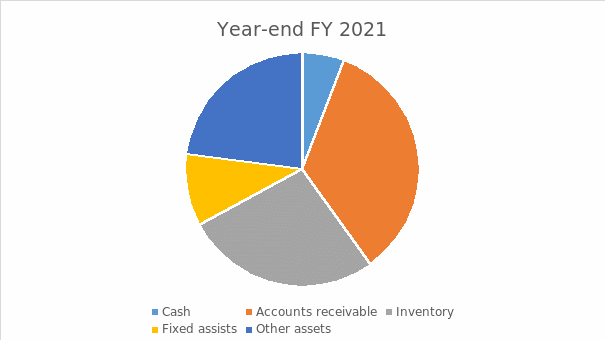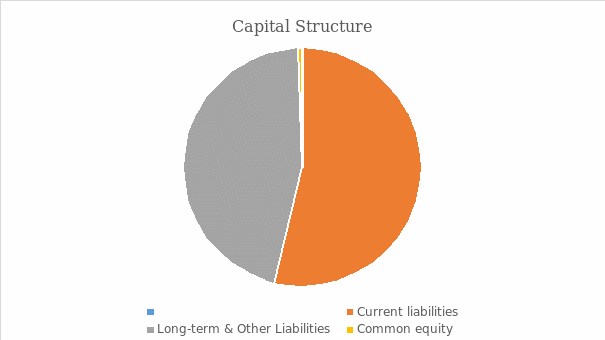Introduction
Pfizer Inc. is a multinational pharmaceutical company that researches, develops, manufactures, and sells various pharmaceutical products. These products may be obtained with a doctor’s prescription, or can be purchased without one. “Innovative Health” and “Essential Health” are recognized as distinct sub-divisions of the company (Pfizer, 2022). Immunology, cancer, cardiovascular disease, endocrinology, and inflammation and pain are the key therapeutic areas addressed by the innovative health division’s medication research, development, and marketing activities. The Essential Health business is responsible for developing, producing, and distributing products in various areas, including infectious illnesses, meningococcal disease, pneumococcal disease, and vaccines.
Company History
At one point in its history, the corporation was manufacturing chemicals in the photography and textile industries. The firm began manufacturing citric acid in 1858, and in 1867, it started making malic acid. In 1873, Pfizer also produced sodium benzoate, which was used as a food preservative. In 1953, the business released a new medicine known as Zantac, which became the first therapy to effectively reduce heartburn symptom (Pfizer, 2022). In 1960, the business released a new chemical known as L-dopa, which became the first therapy for Parkinson’s disease that was considered effective. Tetracycline was the first effective therapy for acne and was released by the firm as a new medicine in 1961 under the brand name Tetracycline. In 1968, the business released a new medicine known as Viagra, which became the first therapy for erectile dysfunction that was considered effective. The year 2000 saw the acquisition of Warner-Lambert by the firm. In 2009, the corporation completed the acquisition of Wyeth.
Organization
Pfizer Essential Health, Pfizer Innovative Health, Consumer Healthcare, and Animal Health are the company’s four distinct business divisions. Pfizer also specializes in animal health. Inflammation and immunology, cancer, and rare illnesses are the primary areas of emphasis for the Essential Health section of Pfizer’s business, which is responsible for developing and marketing pharmaceuticals. Pfizer’s Innovative Health division focuses on researching, developing, and commercializing novel pharmaceuticals in brain, cardiovascular and metabolic illnesses and vaccines (Pfizer, 2022). The Consumer Healthcare division researches, develops, and markets nutritional goods, vitamins, and over-the-counter pharmaceuticals. The Animal Health division is responsible for researching, developing, and marketing various medications and vaccines for animals, including domesticated pets and farm animals.
Main Products and Services
Biopharmaceuticals, essential health, and consumer health products make up the majority of the company’s products. Biopharmaceuticals include products such as prescription medications, vaccines, and gene therapies. Nonprescription drugs, dietary supplements, and plant-based remedies are essential health products (Pfizer, 2022). Pfizer generates revenue by selling its medications directly to end users and through retail pharmacies, hospitals, and government agencies, among other distribution channels. In addition, the company generates revenue by selling licenses to other businesses so that they may utilize its products.
The Geographic Area of Operations
Pharmaceutical giant Pfizer Inc. has a presence in more than 150 countries worldwide. Products are offered in established markets like the US, EU, Japan, and Australia and emerging markets like China, Brazil, and India. The United States, Europe, and Japan are Pfizer’s top three regions of operation. In 2018, around 70% of the firm’s earnings came from these three areas. In 2018, the United States accounted for 39% of Pfizer’s overall sales (Pfizer, 2022). A quarter of the company’s income comes from European customers. Pfizer’s third-largest market, Japan, contributes 5 % of the company’s overall sales (Pfizer, 2022). Pfizer’s growth in developing nations is outpacing that in developed markets.
Recent Developments
Pfizer is a global leader in discovering and producing pharmaceuticals and medical treatments. Recent headlines have focused on the corporation due to several noteworthy developments: intentions to combine with another big pharmaceutical firm, attempts to address the opioid crisis, and the development of a novel coronavirus vaccine. Pfizer and the German firm Biotech have been developing a vaccine against coronavirus. Clinical studies for the vaccine are underway, and findings are encouraging. The vaccine might be accessible to the public by the end of 2020 if all the necessary approvals are given (Pfizer, 2022). Pfizer is currently in merger talks with GlaxoSmithKline, a British pharmaceutical business. After the merger, the combined company will be among the biggest pharmaceutical corporations in the world. The new firm will be visible in American and European markets.
Financial Overview
Table 1. Macrotrends. (2022)

Comments: From figure 1, both revenue and profits have risen over the previous few years, as evidenced by the charts above. If sales are up, it could be because the company is branching out into new markets. In order to meet the demands of its growing customer base, a company would likely increase its marketing and manufacturing efforts, which will boost sales. Increased sales and a growing customer base are signs of a successful business strategy. Finally, the economy as a whole may be improving, which might mean more business and money in your pocket.
Expense Distribution:
Table 2. Macrotrends. (2022)

Comments: In figure 2, the budget allocated to R&D has grown by $13,829 since last year. It is probably because the firm attempts to enhance its offerings to customers. Expenses for selling, general, and administrative costs have increased by $12,703. This is most likely owing to higher marketing and advertising costs. The 61.85% rise in operating expenses can be attributed to the higher costs of goods sold and the costs connected with introducing new products and services.
Assets Distribution:
Table 3. Macrotrends. (2022)
Pie Chart

Comments: The data indicates that the company has a strong cash position and a relatively high inventory level as evident from Figure 3. The company’s accounts receivable may be higher than average, indicating that its customers take longer to pay their invoices. The company’s fixed assets are also relatively high, which could indicate that it has a large amount of property, plant, and equipment.
Capital Structure:
Table 4. Macrotrends. (2022)

Comments: One possible reason for the high current liabilities compared to long-term liabilities and common equity could be that the company has taken on a lot of debt to finance its operations as seen in figure 4. Another possibility is that the company has been incurring losses and using up its cash reserves. The data shows that the company has many liabilities compared to its equity. It could be due to several factors, such as high debt levels or many deferred tax liabilities. It is also possible that the company has many other liabilities, such as leases or contracts.
Ratio Analysis
Table 5: Nanduri et al., (2021).
Comments: From figure 5, the current ratio measures a company’s ability to pay short-term obligations. The quick ratio measures a company’s ability to pay its short-term obligations without selling or converting its inventory. Pfizer’s current ratio has increased from 1.35 to 1.40, while its quick ratio has decreased from 1.19 to 1.04. This may be due to an increase in short-term obligations or a decrease in inventory. Madonna’s current ratio has increased from 1.44 to 1.76, while its quick ratio has increased from 1.60 to 1.42 (Moderna, 2022). It could be because to an increase in inventory or a reduction in short-term commitments.
Assets Management:
Table 7. Macrotrends. (2022)
Comments: According to the statistics from figure 6, Pfizer’s total asset turnover and average collection period rose from 2020 to 2021. It might be due to a variety of variables, such as increasing sales, better inventory management, or more effective accounts receivable management. From 2020 to 2021, Moderna’s total asset turnover and average collection period remained largely stable (Macrotrends, 2022). As a result, it could happen due to a variety of issues, including slower revenue growth, inefficient inventory management, or ineffective accounts receivable management.
Debt Management
Table 7. Macrotrends. (2022)
Comments: Total debt as a percentage of total assets for Pfizer rose from 0.06 in FY 2020 to 0.08 in FY 2021, as shown by the statistics in figure 7. There could be a correlation between the corporation taking on more debt to fund operations and introducing new initiatives. As of FY 2021, Moderna’s total debt to total assets ratio is 0.96, up from FY 2020s 0.5 (Moderna, 2022). Since the company has been increasing manufacturing of its COVID-19 vaccine, it has had to raise its borrowing to finance its operations, which is likely to blame. A company’s ability to pay interest on its debt can be estimated using the time it earned.
Profitability
Table 8: Macrotrends. (2022)
Comments: From 2020 to 2021, Pfizer saw a substantial improvement in its net profit margin and return on assets as indicated in figure 8. Reasons for this include the company’s dominance in the international vaccine industry. However, while Moderna’s net profit margin has decreased, the company’s return on equity has increased significantly. It is most likely due to the company’s success in the global vaccination industry. It is unknown why these two firms are functioning so differently financially. To begin, given Pfizer’s larger size and long history, the company has been able to diversify its product line. It is, therefore, less dependent on the success of any single medicine. Finally, Moderna’s vaccine is still in its early phases of commercialization, and the firm may see improved margins as it increases production and expands its market share.
Market Value Structures
Table 9. Macrotrends, (2022).
Comments: Pfizer’s stock is more expensive than Moderna’s; thus, that is probably why the two companies have different PE ratios as evident from figure 9. As a result, Pfizer’s longer track record of success and greater credibility in the industry. Investors may be less familiar with or confident in Moderna shares because of the company’s relative youth. Given that Moderna is a more recent company than Pfizer, it likely has still not had as much time to accumulate the same assets, which explains the difference in market to book ratio.
Conclusions and Recommendations
Pfizer has a competitive advantage due to its size and longevity; it has been in business for a much longer time than Moderna. For instance, Pfizer’s long history of success increases its credibility in the eyes of investors (Nanduri et al., 2021). In the coming years, the global vaccination industry is anticipated to expand rapidly, putting both companies in a prime position for rapid expansion. The global market for vaccinations is expanding; therefore, Pfizer may wish to prioritize expanding its manufacturing capacity to meet demand. Pfizer could meet the rising global demand for vaccinations if it increased production.
Thus, Moderna may sequentially increase its marketing efforts to increase brand recognition and product recognition among its target market. Improving the visibility of Moderna’s products is essential for attracting new customers and expanding the company’s revenue base. Ultimately, the two companies may collaborate to improve their supply chain management systems, thereby increasing efficiency and reducing expenses. Supply chain optimization would save time and money for both organizations.
References
Macrotrends. (2022). Pfizer – 50 year stock price history: PFE. Macrotrends. Web.
Moderna. (2022). Annual reports. Annual reports. Web.
Nanduri, S., Pilishvili, T., Derado, G., Soe, M. M., Dollard, P., Wu, H., Li, Q., Bagchi, S., Dubendris, H., Link-Gelles, R., Jernigan, J. A., Budnitz, D., Bell, J., Benin, A., Shang, N., Edwards, J. R., Verani, J. R., & Schrag, S. J. (2021). Effectiveness of pfizer-biontech & moderna vaccines in preventing SARS-COV-2 infection among nursing home residents before and during widespread circulation of the SARS-COV-2 B.1.617.2 (delta) variant — National Healthcare Safety Network, March 1–August 1, 2021. MMWR. Morbidity and Mortality Weekly Report, 70(34), 1163–1166. Web.
Pfizer. (2022). Annual reports. Pfizer Inc. – Investor relations: financials: annual reports. Web.